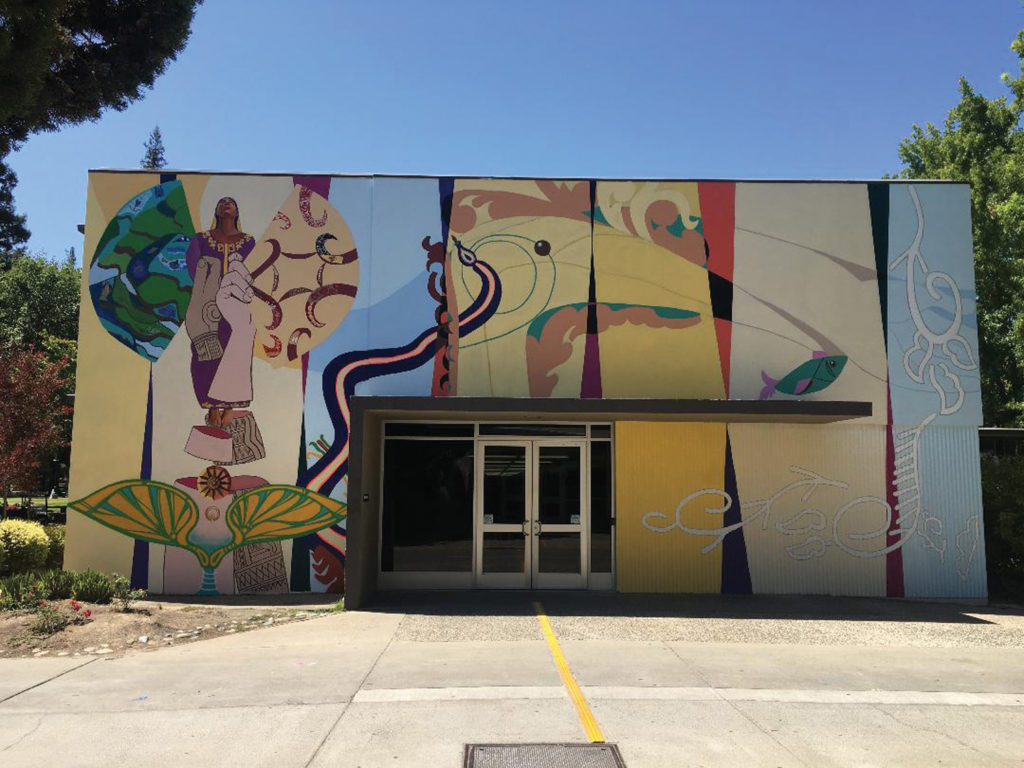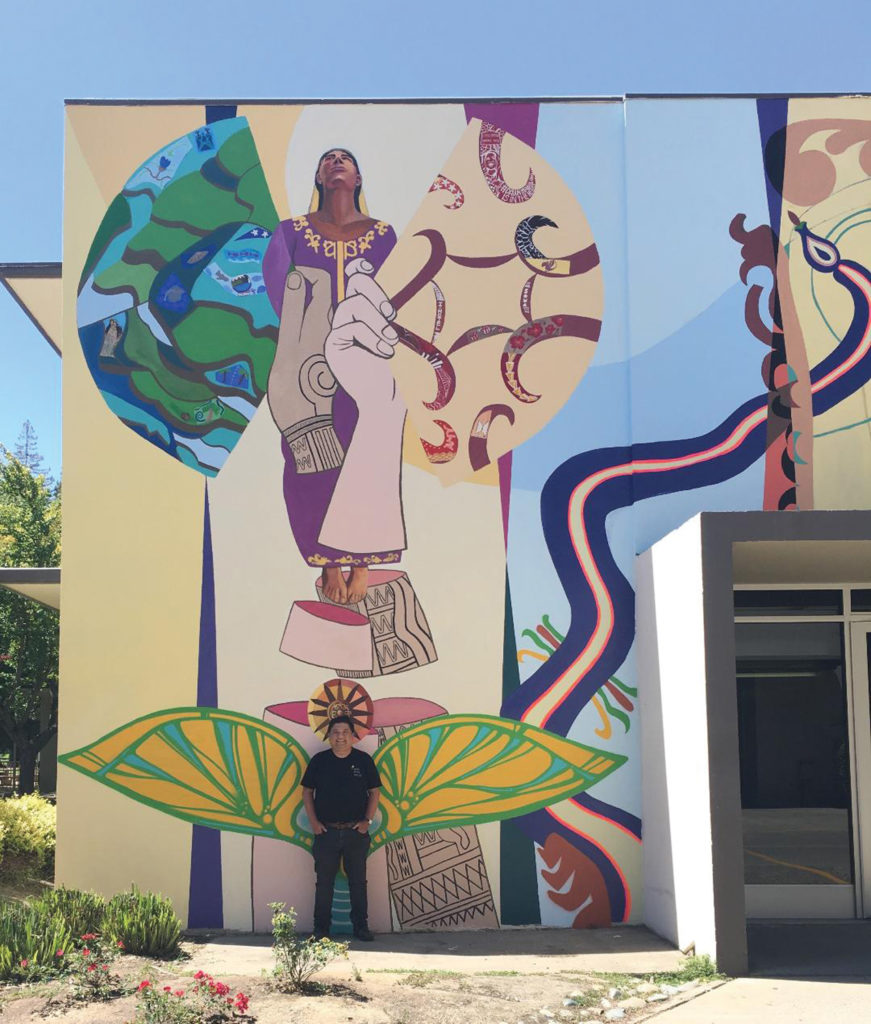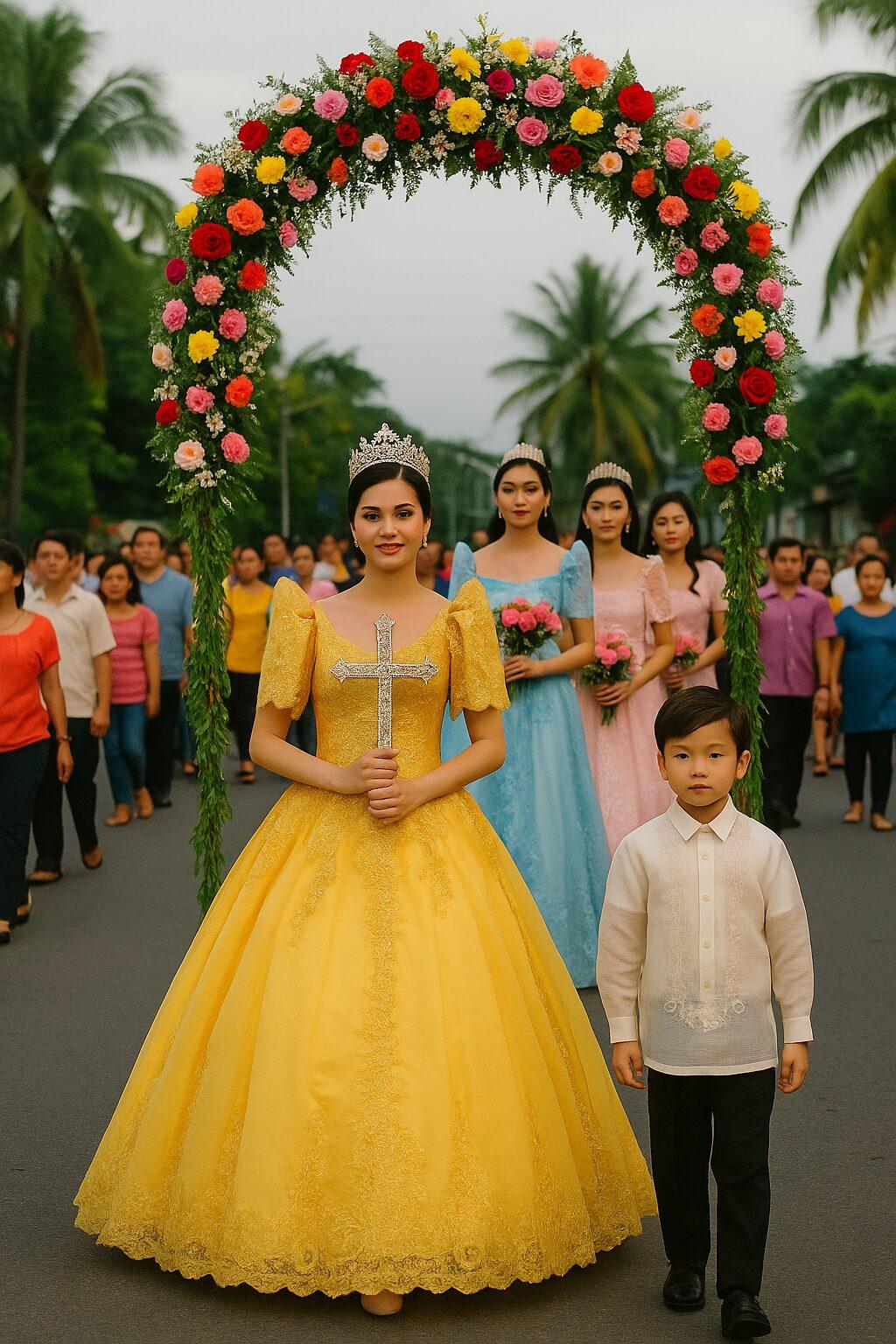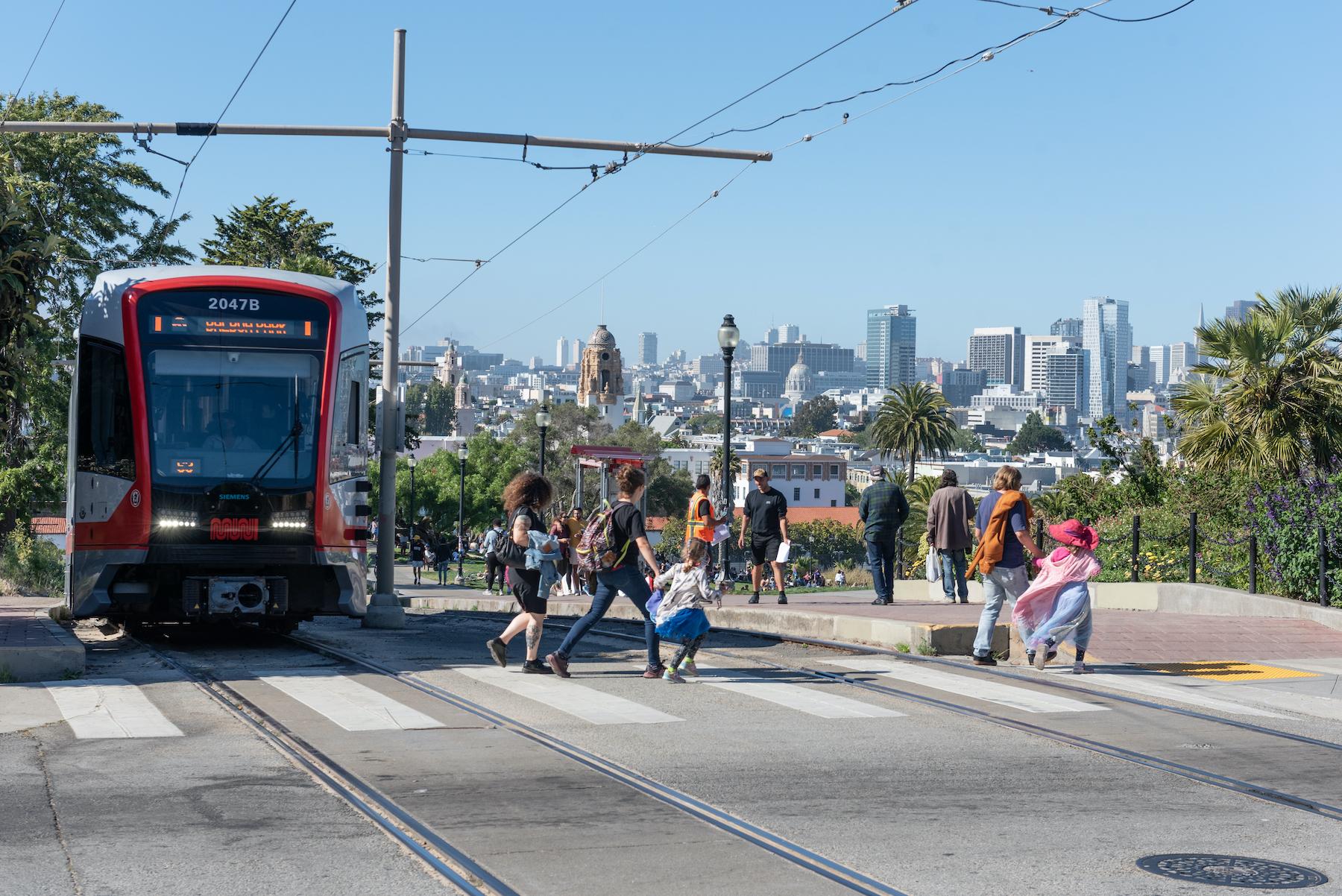
A Los Angeles-based Filipino artist recently completed a new mural in the California State University, Sacramento campus.
Eliseo Silva’s “Magkasama Tayo Aangat (Together We Rise),” unveiled on Sunday, August 18, is a tribute to Filipino migration, particularly by Filipina women, in the United States and the merging of the Filipino and American cultures.
“Like my own migration story, the mural depicts a multigenerational experience that many Filipinos can relate to,” Silva told the Asian Journal.
Located on the entrance of the college’s Brighton Hall, the 22” x 48” mural was completed over the course of 10 days beginning in early August.
Vince Sales, arts curator for the Philippine National Day Association’s (PNDA) LahiARTS program, said that he pushed for a Fil-Am mural — given that Filipino Americans are the largest Asian American group in the state — to be created during the Wide Open Walls (WOW) festival in Sacramento, considered the largest mural event of its kind in the country.
“The organizer suggested that we have the mural at Sacramento State since there’s an important educational component to the mural. Sacramento State agreed, after my approach, and was receptive because of Eliseo’s body of work and the robust Fil-Am student presence on campus,” Sales shared with the Asian Journal.

One of Silva’s most famous works is the 1995 mural “Filipino Americans: A Glorious History, a Golden Legacy” at Unidad Park in Historic Filipinotown, which is one of the 10 monumental murals in Los Angeles.
After PNDA led the fundraising for the project, Silva came to Sacramento to conduct a “mural in minutes” workshop during the organization’s Filipino American Youth Leadership Conference. He also listened in on other workshops, including one on spoken word, that helped inspire him as he created his latest work.
“The mural also answers these questions posed to the students who joined our workshops: Where I’m from? and Where I’m at?” Sales said. “The visual responses to these two questions are interesting and diverse and you’ll see variations in our journeys in the U.S.”
Using vibrant colors and intricate details and patterns, “Magkasama Tayo Aangat (Together We Rise)” shows two hands — that of a mother on the left and a child on the right to symbolize the duality of the Fil-Am identity. The mother’s hand is holding a fan that represents the rice terraces in the Philippines’ Cordillera region.
The child’s fan references the stripes and stars of the American flag and other prominent landmarks and figures, such as Little Manila in Stockton, San Francisco’s SOMA Pilipinas, and the late historian Dawn Mabalon.
“On one hand, a lot of Filipinas leave the Philippines as caregivers, nurses or nannies and leave their children behind so there’s a physical separation. But when they come here to America, there’s another kind of separation, which is the complete disregard for the Filipino traditions, that’s why the two hands are apart,” Silva described.
In between the two hands is a more realistic-looking woman, who stands for a Maranao princess from the folk tradition of the indigenous Muslim group in Mindanao. Also depicted in the mural are Philippine mythology symbols, the Sarimanok, a protective, lucky bird with a fish caught in its beak, and the Naga, a serpent-dragon creature.
“Even though a lot of us tend to blend in once in America, we should aspire to stand out instead and share our Filipino stories, retain the best traditions from both countries and create new things by embracing both to advance American culture,” Silva added.
Similar to his 1995 mural, it also honors the legacy of the Filipino farmworkers in central California and that their history and contributions should not be forgotten.
Silva was one of three artists who were chosen as part of the campus project during the WOW festival; the other two artists were Miami-based Hoxxoh and Jillian Evelyn, who is also from LA.
“Through my work, I hope this will inspire more people to share Filipino stories and art. A mural is a first step towards that,” the muralist said.






